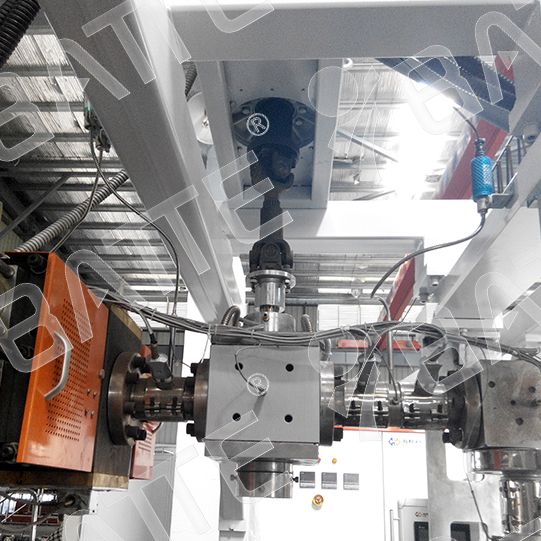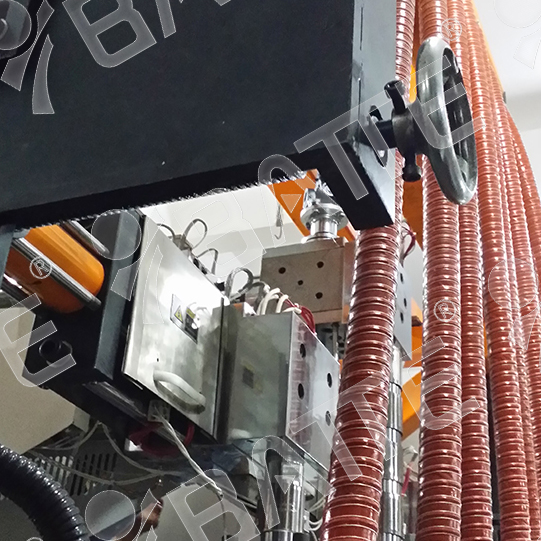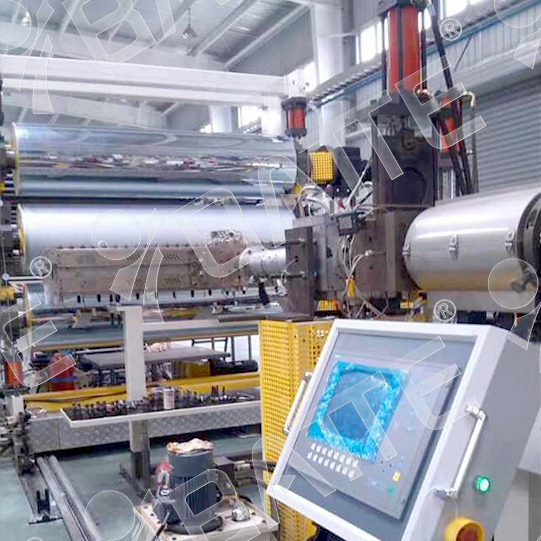Is it necessary to install a screen changer on a plastic film extrusion line?
The installation of screen changers (melt filters) is necessary in plastic film extrusion lines, especially in scenarios with high product quality requirements, long continuous production times or the use of recycled materials. The following is a specific analysis:
1. Why is it necessary to install a screen changer?
(1) Core functions
Filtering impurities: removing carbonized particles, metal shavings, gels, etc. from the melt (to avoid defects such as “fish eyes” and “crystal spots” in the film).
Protection of downstream equipment: preventing impurities from damaging melt pump gears, die head runners (maintenance costs can be reduced by more than 50%).
Extend continuous production time: no need to stop to clean the die head, change the screen to maintain production (especially for BOPP, CPP and other high-speed production lines is critical).
2) Industry measured data
|
Configuration situation |
Film surface defect rate |
|
Without screen changer |
≥3% |
|
With automatic screen changer |
≤0.5% |
Impact on energy consumption: clogged screen will lead to a 10-15MPa increase in melt pressure, increasing extruder energy consumption by 20%+.

2. Key factors for selection
|
Parameter |
Example of film production requirements |
Recommended screen changer type |
|
Filtration accuracy |
General packaging film: 80-120μm |
Double column screen changer |
|
|
Optical/Ultra-film: 20-50μm |
Continuous backwashing screen changer |
|
Production speed |
Low speed (<100kg/h) |
Manual screen changer |
|
|
High speed(>500kg/h,如BOPP线) |
Fully automatic hydraulic screen changer |
|
Melt pressure |
Low pressure (<15MPa, e.g. LDPE blown film) |
Mesh belt type screen changer |
|
|
High pressure (>25MPa, e.g. BOPET) |
Duplex plunger type screen changer |
3. Necessity in special cases
(1) When using recycled materials
High risk of impurities in recycled PET/PE, double screen system (coarse + fine) is required.
Case: In a CPE recycled film production line, after installing an automatic screen changer, the screen replacement frequency was extended from 2 hours/time to 8 hours/time.
(2) High value-added films
Lithium battery diaphragm: even trace impurities can lead to short circuit of the battery, requiring 0.1μm ultra-fine filtration.
Optical film: Screen changer needs to be paired with a melt gear pump to ensure pressure fluctuation <0.5MPa.

4. Exceptions without screen changer installation
Very high purity of raw materials: such as medical grade brand new material production, and the cleanliness of the workshop reaches ISO Class 7 or above.
Ultra-short-term trial production: <2 hours of process verification can be temporarily not installed (but need to filter the raw material in advance).
5. Synergy between screen changer and melt pumps
Optimal combination:
Screen changer (front) → melt pump → die head
The screen changer protects the melt pump gears and the melt pump counteracts the pressure fluctuations of the screen changer.
Measured effect:
A BOPP production line using “automatic screen changer + melt pump” combination, the thickness of the CV value from 2.1% to 0.8%.

Unless the production environment is absolutely clean and the raw material is free of impurities, the plastic film extrusion line must be installed screen changer. For high-speed, high-precision or recycled material production, a fully automatic screen changer should be selected and controlled in conjunction with a melt pump to maximize production efficiency and product yield.
Email: sale@meltpump.com
WhatsApp: +86 158 38331071